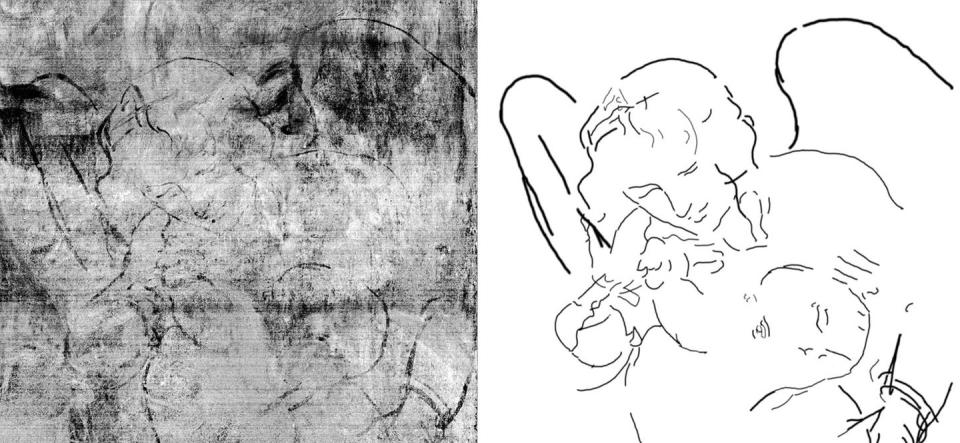X-Ray Scans Uncover da Vinci's Hidden Painting in All Its Glory

While studying a Leonardo da Vinci painting in 2005, researchers found a hidden painting underneath.
Improved technology has now allowed the angelic images to be seen clearly.
Researchers are still unsure why Da Vinci originally covered it up.
Thanks to books and movies like The da Vinci Code, the name Leonardo da Vinci isn't just associated with being a polymath and a historically important genius, but also a mystery. The National Gallery in England has been working on such a mystery since 2005, and now it's come closer to understanding the secrets of da Vinci's hidden painting.
Fourteen years ago, a team of scientists, conservators, and curators all teamed up to examine da Vinci's "The Virgin of the Rocks." Originally made as a commission for a church, the Gallery owns the second version of the painting da Vinci made, likely as a replacement for the first. da Vinci believed that the church wasn't offering adequate payment for the second version, so he sold it.
Now, none of this is out of the ordinary. Older art is regularly examined, and da Vinci had several financial complications in his life. When the second "Virgin" was brought out to study, the scientists expected to find an underdrawing. But thanks to a modern technique known as infrared reflectography (IRR), they found a hidden painting underneath.

The surprised researchers reached out to a now-closed consortium group known as Access, Research, and Technology for the Conservation of the European Cultural Heritage (EU-ARTECH) for further study. Teams from Italy came with high-resolution digital infrared scanners to further confirm the second painting.
Now, National Gallery says in a press release, after 15 years of technological improvements, "more of these details have been identified."
"New imaging has revealed Leonardo’s earlier design for the angel and baby Christ, which show significant differences to how they look in the finished painting," the Gallery says. "In the composition that was drawn first, both figures appear higher up, while the angel, facing out, is looking down on the baby Christ with what appears to be a much tighter embrace."
Using a technique known as macro X-ray fluorescence scanning (macro XRF), whose utility in studying art was developed in 2018, researchers were able to determine that the hidden drawing was created using "material that contains zinc," the press release says.


The big question of why da Vinci considered a new painting, and then changed his mind again, remains a mystery.
"With the aid of these scientific images, we can surmise that Leonardo began work on a new composition, but then changed his mind, and reproduced his original composition – perhaps after the disagreement had been settled," the Gallery says. "This second version is no mere reproduction, however; along with significant adjustments to the figures he also uses this version to explore new kinds of lighting effects based on his own research into optics and the physiology of human vision."
The pathway to art is rarely a straight and narrow one. While it's hard to say what da Vinci was thinking, the Gallery says, the discovery strengthens "our perception of Leonardo’s restless creative energy: always adjusting, always seeking more."
You Might Also Like

